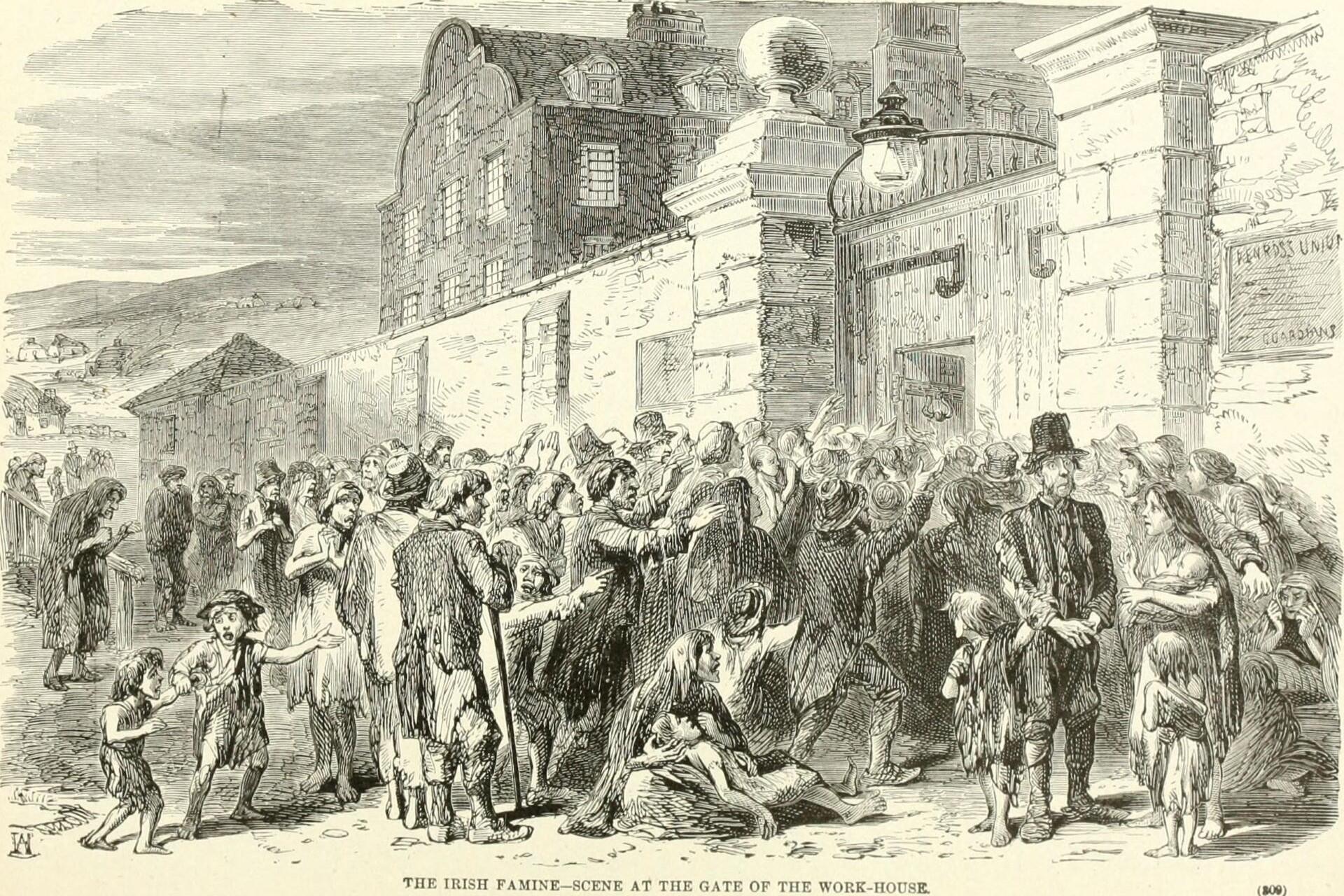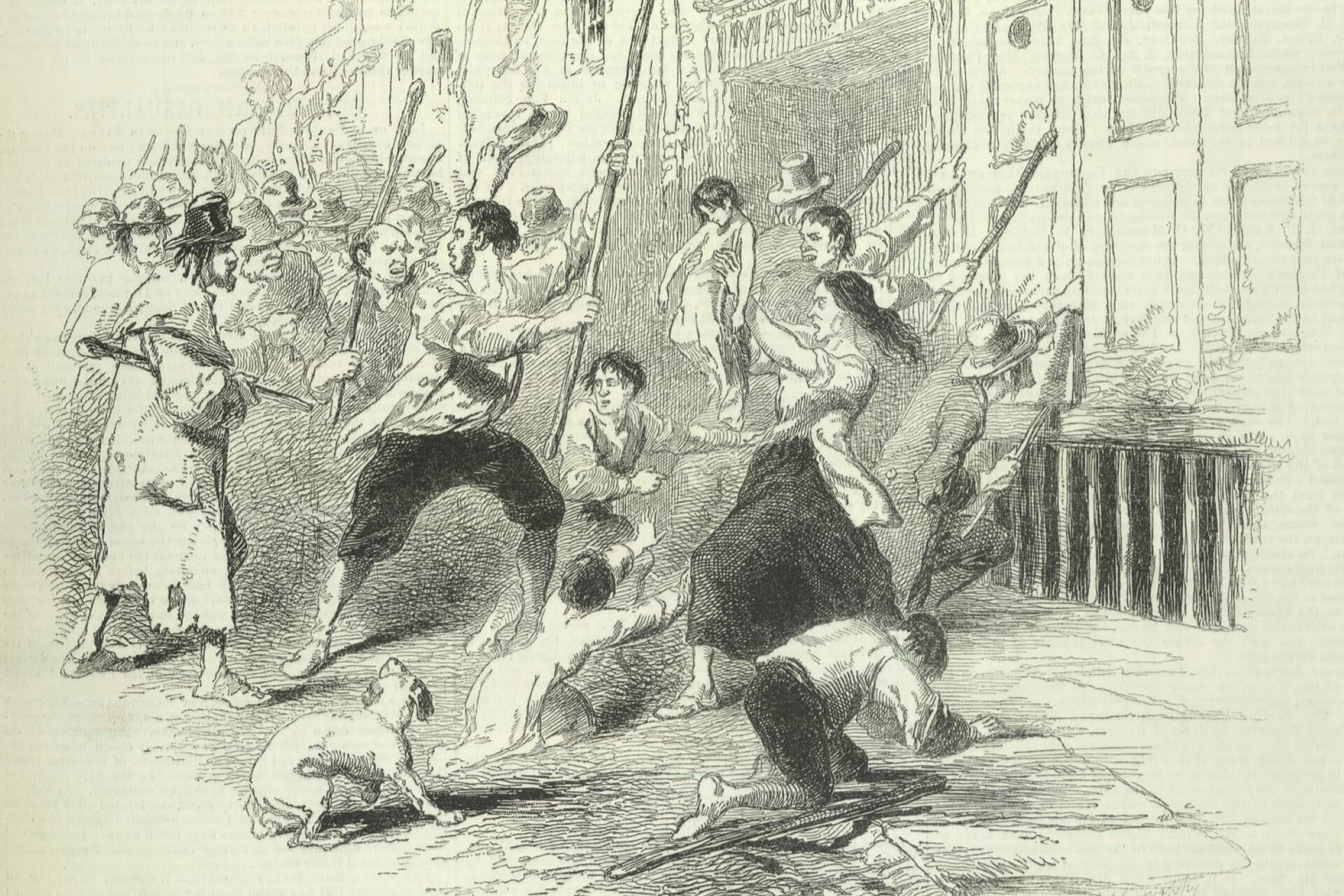The Irish Potato Famine, the Great Hunger, or the Great Famine, was one of the most devastating tragedies in Ireland's history. It resulted in the death of over a million and the mass emigration of a million more. It was caused by a potato blight in the 1840s, but worsened drastically by political inaction, social inequality, and British government policies that didn't address the crisis. Here, we'll explore how an agricultural disaster fuelled resentment, reshaped national identity and accelerated the push for Irish independence.

What Was the Irish Potato Famine? An Overview of a National Tragedy
The Irish Potato Famine took place between 1845 and 1852. This catastrophic event reshaped Irish history.
It is often called the Great Famine. Potato blight, a fungal disease, rapidly destroyed the island's primary food source.
The potato was a staple crop and a vital lifeline at the time. When the blight first struck in 1845, it ruined about half the crop, and in the years that followed, it kept returning, leading to starvation, disease, and death.
The blight was naturally caused, but the resulting disaster was influenced by social, political, and economic factors, particularly British colonial policies, the rigid class system, and the widespread dependence on a single crop.
The famine claimed the lives of a million people while another million emigrated elsewhere, including America, Canada, and Britain.
The famine decimated the Irish population, causing it to drop by around 25%, with the decline continuing for decades.
This wasn't just about a crop failure; it became a symbol of human suffering and political neglect and a cautionary tale of the inequality of 19th-century Ireland.
The Importance of the Potato in 19th-Century Ireland
By the mid-19th century, the potato was the cornerstone of the Irish diet, particularly for the country's rural poor.
The crop was introduced into Ireland from the New World in the 16th century. It thrived so well in Ireland's climate and soil that by the 1800s, over three million Irish people (around half the population) relied on it almost exclusively for sustenance.
Since a small plot of land could yield enough to feed a family for a year, it was essential for tenant farmers who lived on rented land under harsh conditions.
Many Irish families relied on potatoes as they provided the essential calories, vitamins, and nutrients required to survive during the widespread poverty across the country.
Since most of the best farmland was owned by Anglo-Irish landlords and most of the grain and livestock produced on Irish estates were being exported to Britain, the poorest tenants were left relying on potatoes.
As you can imagine, the failure of this single crop was devastating for many of the country's most vulnerable populations.
Population over 8 million
Rural families self-sufficient with potato crops
Communities tied to land and kin
Population collapsed by 25%
Widespread starvation and disease
Mass emigration and village abandonment
Blight and Crop Failure: How Disease Devastated a Nation’s Food Supply
In 1845, when a mysterious fungal disease began to spread through potato crops in Ireland, the plants rotted in the ground almost overnight.
The culprit was Phytophthora infestans, a waterborne pathogen from mainland Europe. The fungal disease thrived in Ireland's damp climate, and the blight quickly destroyed half of the national crop that year.

The outbreaks in the following years were even worse, and almost the entire harvest was wiped out.
The real devastation didn't come from a shortage of food, though. Grain, meat, and other agricultural products were still being exported, mainly to England. The rural poor had neither the power nor money to access this food, leaving millions with nothing.
Tenant farmers, who could neither pay rent nor feed their families, were evicted from their homes and forced to wander in search of aid or shelter.
Potato blight was a natural disaster, but the famine’s devastation was made worse by political inaction, food exports, land inequality, and mass evictions.
The blight itself was an unavoidable natural disaster, but the British government's failure to respond turned a crop failure into one of the worst humanitarian catastrophes of the 19th century.

British Government Response: Neglect, Relief Efforts, and Controversy
The British Government's response to the Irish Potato Famine remains heavily criticised. Some relief efforts were made but were too limited, delayed, or guided by prioritising economic theory over human suffering.
At the time, Ireland was part of the United Kingdom of Great Britain and Ireland (long before the partitioning of Ireland), meaning that the government in Westminster was responsible for relief, not a local Irish government.
UK Prime Minister Sir Robert Peel initially attempted to intervene by importing Indian corn (maize) and setting up public works projects. When Lord John Russell took office in 1846, the government opted for laissez-faire economics, employing a hands-off approach in disaster. They feared that too much aid would create dependency, so they chose to continue grain exports from Ireland while its people starved.
The official source of relief was workhouses. These were overcrowded, poorly funded, and breeding grounds for diseases.

Public works schemes that were supposed to provide employment left desperate people to perform hard labour for meagre wages under physically punishing and humiliating conditions.
Understandably, resentment among the Irish population grew, with opinions of the British government ranging from neglectful at best to deliberately cruel at worst.
The British authorities' response to a crop failure turned a potentially short-term crisis into a deadly famine and a humanitarian crisis.
The Role of Landlords and the Struggles of Irish Tenants
It wasn't just the government response in Westminster that exacerbated the crisis. The underlying inequality in the Irish land system in the 19th century played a significant role.
Most Irish people were tenant farmers who rented plots of land from absentee landlords, with many being Anglo-Irish or English and living in Britain.
These landlords rarely reinvested in the communities they profited from, leaving the poor Irish tenants vulnerable because they were utterly dependent on growing and selling potatoes.
Their ability to pay their rent was linked to the potato crop, so when it failed, they could no longer afford it. Rather than reducing rents or offering any kind of assistance, most landlords simply issued mass evictions.
Some of these evictions were of entire villages, and cottages were even demolished to prevent tenants from returning.
Some landlords attempted to help their tenants by offering food or absorbing the cost of relief, but they were in the minority.
In most regions, landlords continued to export grain and livestock from their estates while the tenants working there starved.
Families ended up having to fend for themselves, heading to the aforementioned workhouses, dying by the roadside, or boarding coffin ships headed to America, Canada, or Britain.
Naturally, resentment towards the landowning class deepened, and future political movements focused on land reform and national self-determination.
Though almost all of Ireland was Christian, with Christianity famously introduced to the island by St. Patrick, the landowning class was predominantly British or Anglo-Irish Protestants with the Irish tenant farmers mostly Catholic.
Starvation and Disease: The Human Cost of the Famine
The potato famine wasn't a single-issue disaster. It turned from a hunger crisis into a huge public health catastrophe.
with over a million dead and a further million emigrating.
The ongoing poverty caused by the famine led to more starvation and disease, and the victims numbered one million people.
Those dependent on the potato for nutrition were left with nothing. People had to eat whatever they could, including grass, roots, and even boiled weeds.
The starvation meant that those weak from hunger succumbed to diseases, which were spreading quickly in overcrowded homes, workhouses, and shelters.

The conditions in workhouses and the homes of the poorest Irish families meant that typhus, dysentery, cholera, and relapsing fever were all rampant. Given that public health systems were non-existent in many rural areas, outbreaks of these diseases were largely ignored, more so than even the potato blight.
Mass Emigration: Fleeing Hunger for a New Life Abroad
The famine and lack of support from the government meant that millions of Irish people had to choose between staying and risking starvation or going somewhere else.
Over a million Irish men, women, and children chose to emigrate, making the population shift between 1845 and 1855 one of the largest in European history. The last population shift anywhere near this magnitude in Ireland was likely the arrival of the Celts centuries earlier.

Ships regularly departed for America, Canada, England, and even Australia, with passengers who had no plans to return to Ireland.
These ships were called “coffin ships” because of how cramped they were and how regularly people would die on board.
Passengers were crammed below deck with little food, no sanitation, and rampant disease, with thousands dying before they even reached their destination.
How the Famine Reshaped Ireland
Social and Political Consequences of the Famine
The Irish Potato Famine wasn't just a humanitarian disaster. It reshaped Ireland's social fabric and political consciousness.
For centuries, there was steady resistance against British rule in Ireland, but the devastating loss of life, mass emigration, and widespread suffering left a deep imprint on Irish society, further fuelling the demand for Irish independence.
Whole communities vanished, traditional family networks were destroyed, and Irish rural life never fully recovered, with the scars still visible today.
The famine was just one of many rallying points for Irish nationalism, and the view of the British government's failings ignited a powerful wave of resentment.
The Irish people saw British rule as indifferent or hostile, and the famine led to the Land Wars of the late 19th century and the struggle for independence during the early 20th century.
Résumer avec l'IA :















